The Fashion Photographer Who Wrangles Cats
"Have you ever carried a freaked-out feral cat in a metal trap up three flights on a rickety NYC fire escape?”
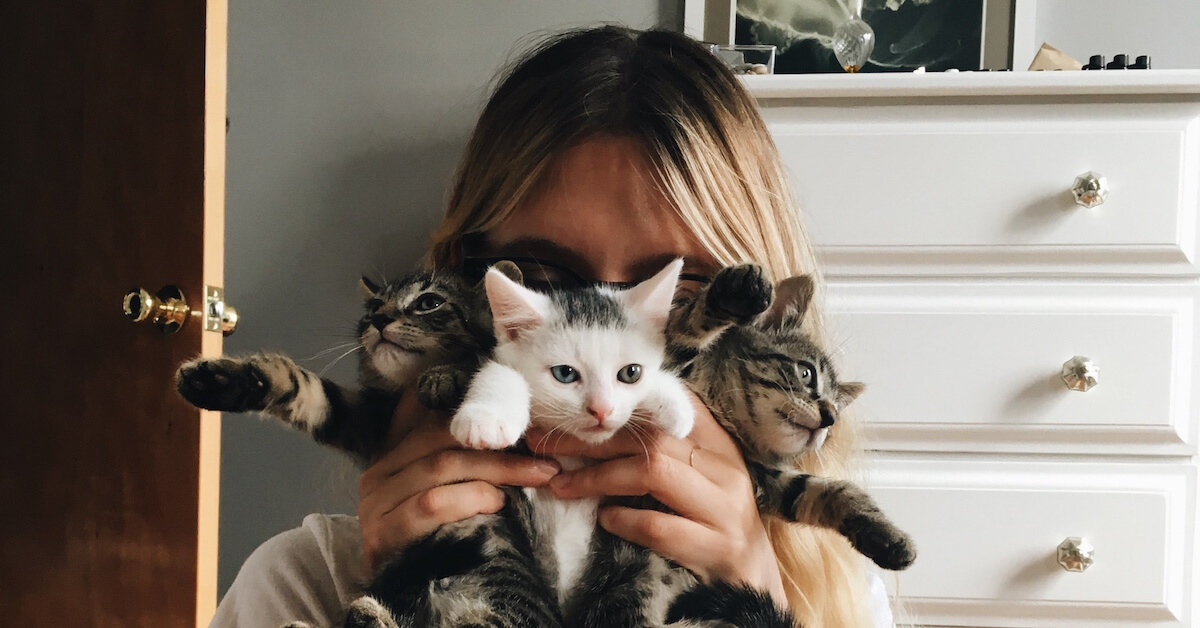
"Have you ever carried a freaked-out feral cat in a metal trap up three flights on a rickety NYC fire escape?”

Some people are cat lovers. Some are cat fanatics. And some are willing to turn their own lives inside out, donating their time and energy to helping felines in need—even if that means sharing a cozy New York City apartment with nearly a dozen kitties at a time.
Heidi Systo, a self-described “cat wrangler,” falls into the latter camp. During the day, she works as a photographer for Meg, a high-end Brooklyn womenswear boutique. She’s leveraged those visual skills to promote cat adoption and awareness via her impossibly adorable Instagram account.
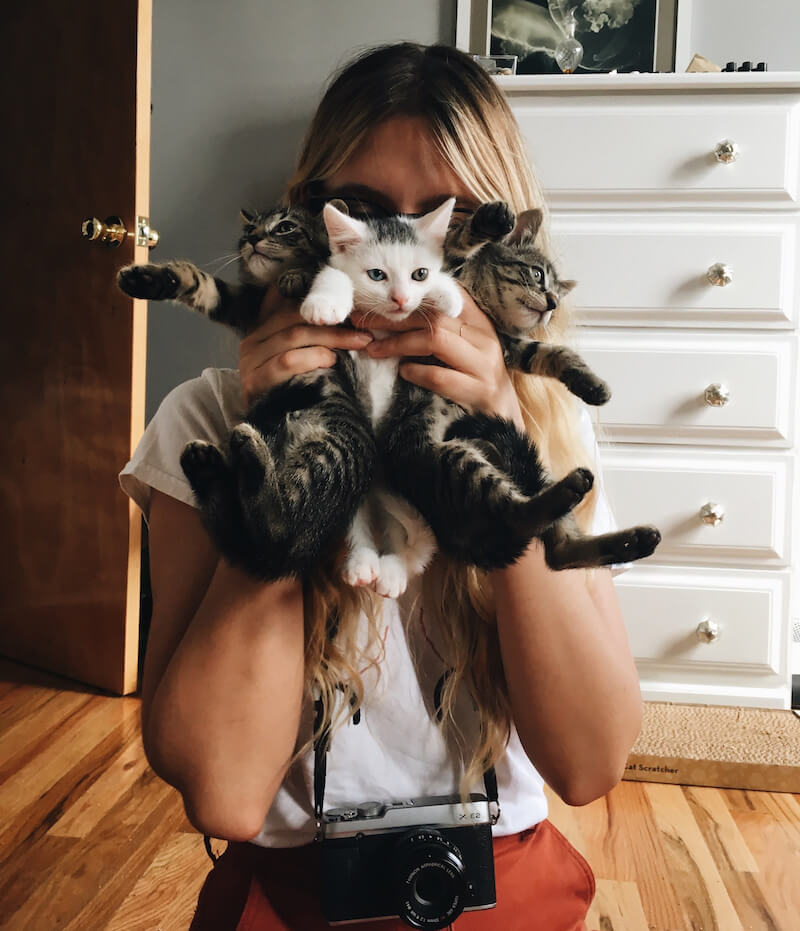
At any moment, Heidi’s Brooklyn home is filled with a rotating crew of street cats that she’s nurturing. They’re washed in the sink. Their wounds or ailments are treated. If they’re super young, they might have to be bottle-fed by hand.
“I always liked cats, but was never a real ‘cat person,’” Heidi says. “My cats growing up were terrified of me and would hiss and run anytime I entered the room.”
Times have certainly changed. Now Heidi spends much of her free time trapping feral cats—with the goal of having them spayed or neutered, and returned to their outdoor domain—as well as socializing felines in order to find them forever homes.
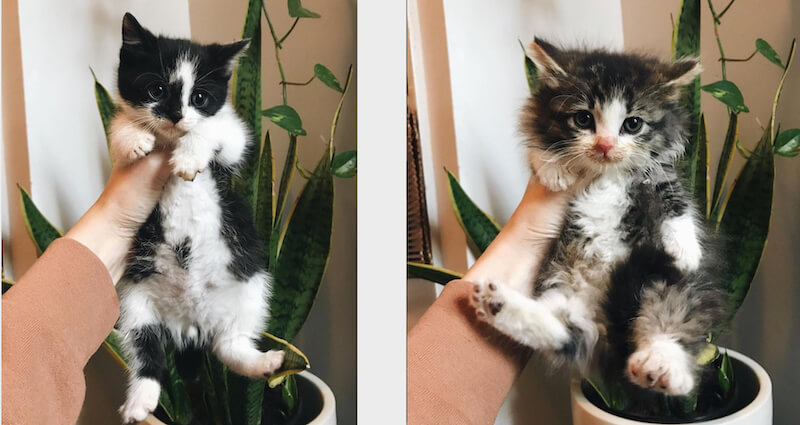
We spoke with this dedicated cat person about the unexpected turns her life took on the way to becoming a Brooklyn cat wrangler.
Tell me about how you went from being a cat lover and a pet parent to being an active member of this community—doing trap/neuter/return (TNR) programs, and fostering countless cats.
It definitely didn’t happen overnight.
My college roommate and I adopted a pair of kittens the second we moved off-campus into our own New York apartment. I use the term ‘adopted’ lightly—they were free Craiglist kittens. We picked them up from a woman in Queens whose apartment had about 15 cats in it. In retrospect, I wish I could have offered her free spaying and neutering!
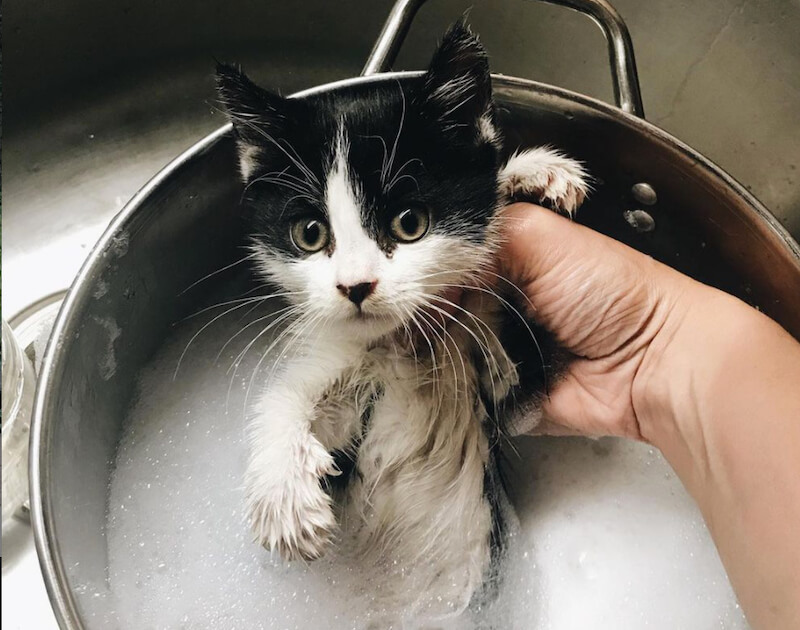
I live in Bed-Stuy, so seeing stray cats around is inevitable. In 2012, before I got into rescue, I have a distinct memory of running into a friendly cat on my block: skin and bones, and begging to come inside. I left him a can of food but didn’t attempt to bring him in because I knew my roommate would disapprove. I never saw him after that night… and it haunts me to this day that I didn’t help him.
Fast-forward one year later. I’m walking home drunk from a party near my apartment. It’s raining cats and dogs (ha) and I hear meowing…
Again, I’m approached by a friendly cat. This time I scoop up the cat and take her home. I reached out to a local rescue group, North Brooklyn Cats, who offered to help me with her. Thanks to a microchip we were able to discover she was just a lost pet, and were able to reunite her with her family.
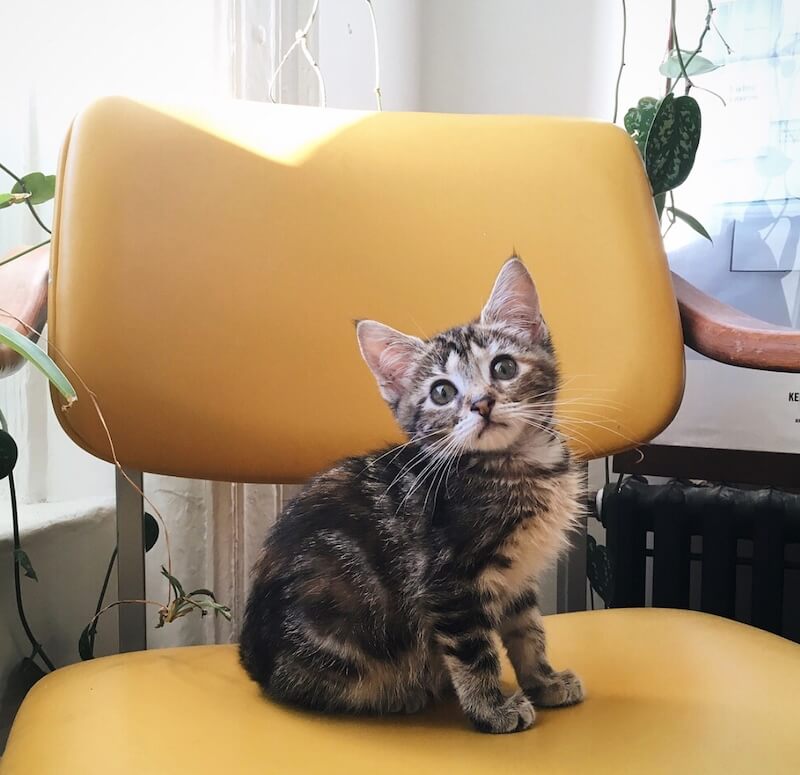
Connecting with that rescue group was definitely the beginning of dedicating my life to cat rescue. I started fostering for them, in addition to continuing to scoop up friendly strays near my apartment.
The next cat I came across was much less friendly. The scoop was more like a chase, and I forcibly carried her six blocks home while she tried to wiggle and escape my arms. When I did get home, I realized I was covered in her pee.
Oof, that’s dedication! What’s the most rewarding thing about being a so-called cat wrangler?
The most rewarding thing is knowing that there are hundreds of cats sitting comfy and cozy, warm, and with full bellies, curled up on a couch right now, that would otherwise be still on the street, or no longer with us at all.
I get a lot of satisfaction from thinking about the individual impact I can make in a cat’s life.
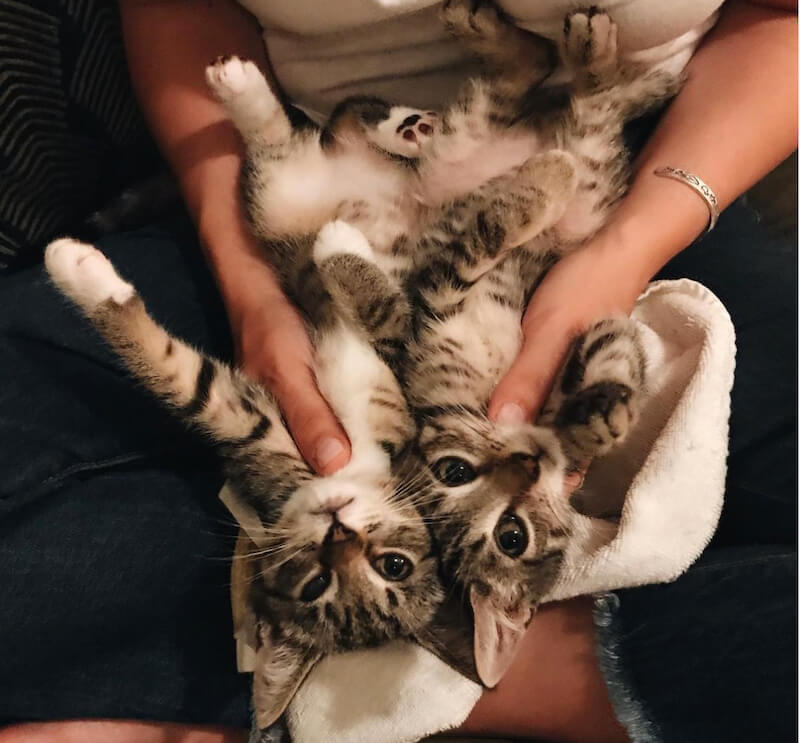
What’s the biggest pain in the ass?
The amount of schlepping cat rescue takes. I spend easily over 10 hours a week just driving around: bringing cats to and from vet appointments, to and from foster homes; driving to different trapping locations; bringing medicine to fosters; lending traps to new rescuers. If anyone reading this in NYC has a car, I guarantee your local rescue group could use you as a transportation volunteer.
I’d love to hear about one of your favorite success stories…
I do a lot of kitten rescue, but my favorites are always big old tom cats. One of the first cats I ever rescued, Melvin, was a beat-up old tom cat I found on my own block. He was covered in scratches and his toes all pointed in different directions from being broken and healing wrong so many times.
My journey with him was a long one. For starters, he escaped from my third-floor apartment within a week of bringing him in. It took me another four months to get him back inside, and it was while trying to trap him again that I discovered a colony of cats in my own backyard: five identical clones of Melvin! He had strong genes…
Thus started my first trap, neuter, return project in my own backyard, all done by climbing up and down the fire escape. Have you ever carried a freaked-out feral cat in a metal trap up three flights on a rickety NYC fire escape? I highly recommend it.
Anyway, we eventually got Melvin back inside. I fostered him for another year. His teeth were so rotten that they all needed to be extracted. And, being such an old cat, getting neutered at such an old age… he had a habit of spraying that took a good six months to get out of his system.
But he just had the best personality. So confident! He lived such a hard life for so long, but it didn’t faze him one bit. Melvin was adopted. He’s the only cat I can say that I actually miss.
How do you feel about the adoption boom that we’ve seen during the pandemic?
For most cat rescuers the influx of fosters and adopters has been nothing but a positive thing. Because most rescues vet potential adopters very thoroughly, anyone who isn’t ready for the commitment typically gets weeded out. I know there has been an issue with dog adoptions, but cats are relatively low-maintenance compared to dogs, and easy to care for even if you work a full-time job outside of your home.
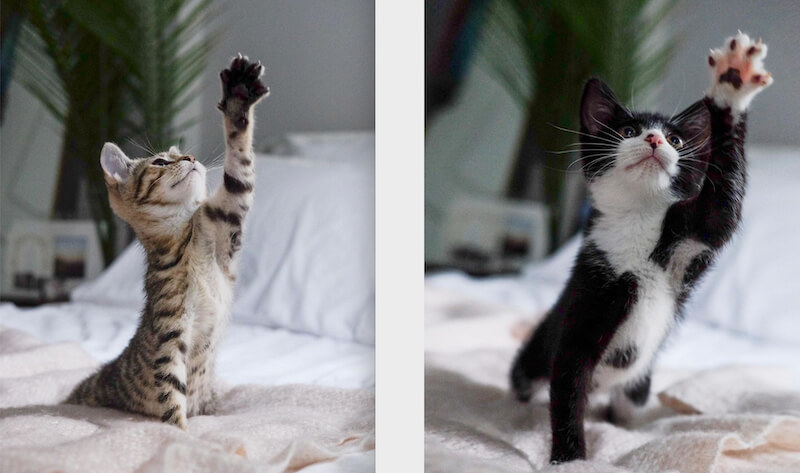
How do you use social media to promote your work with cats?
Instagram has become a huge part of how I do rescue. I definitely try and use my platform not just for promoting my own cats for adoption, but also for educating those who are interested in getting into rescuing or fostering themselves.
A big part of rescue is socializing feral kittens that were born outside, and never handled by humans before being trapped. I felt like there wasn’t a good resource out there that explained how to socialize a feral kitten, and I saw a lot of the same mistakes being made…. so I made an instructional guide on how to do it.
Are there some cats who are so feral that they’ll never be socialized?
There’s a very narrow window of time that a cat can be socialized to humans. Each day that passes after 8 weeks of age, it gets harder and harder to socialize them.
At around 3 months, some cats can be socialized, while others won’t. And if a cat has never been touched by a human or interacted with one by 4 months of age, the chances of being able to socialize it to humans are essentially nil.

Some people think—because they’ve met an older kitten or adult cat that was ‘feral,’ that they then socialized—that any cat can be socialized at any age. But all that tells us is that during its early months of life, that cat did have positive interactions with humans.
A very dedicated person, with a lot of time on their hands, could work very hard for a very long time to socialize an older kitten or adult cat, but the end result is a cat that will be socialized to you and you only, and will still be fearful of any new person.
You studied photography at Pratt, and have a day job in fashion photography. How does that come into play?
Being able to photograph and visually tell the story of the cats I rescue has been a big part of my success. 75% of my adoptions come via instagram (the rest are word-of-mouth). It’s definitely a dream and goal of mine to do this full time, but for now, I have a full-time job that pays the bills.
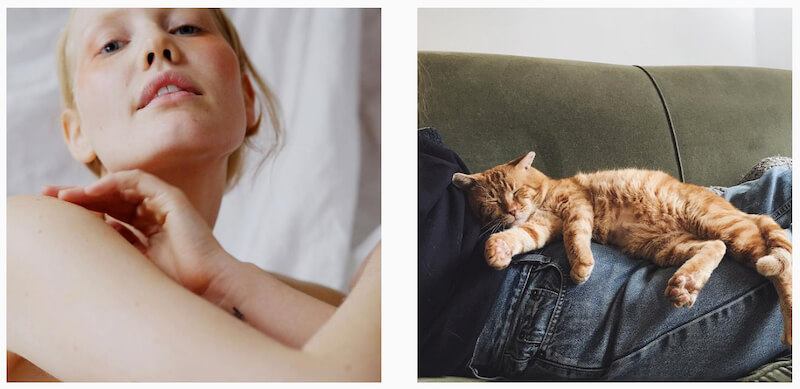
Walk me through a ‘typical’ trap/neuter/return mission…
This is such a hard question, because rarely are any two projects the same…
If I’m coming in cold to a situation—whether it involves a stray cat, a litter of kittens, or a colony of cats—the first thing I do is to find out who feeds them. There is almost always someone already feeding these cats. Trapping cats requires the cats to be hungry enough to go in a trap baited with food, so working with that person.
From there we trap the cats, typically in advance of a pre-scheduled spay/neuter appointment. After surgery the cats need to be held for 24 to 72 hours, and then they are returned back to where they were trapped!
This is the shortened version. New Yorkers can learn more about what a typical project involves by taking a TNR workshop with Neighborhood Cats.
What’s the most cats you’ve ever had at one time in your apartment?
I’ve had around 10 cats in my apartment more than once. It’s crowded but doable. Typically this means I have a litter of kittens in my bedroom (that could be 5 small kittens), a couple of feral cats recovering from spay/neuter surgery in traps in my hallway, and an older kitten being socialized in a crate in my living room…plus my 2 resident cats. Don’t tell my landlord.
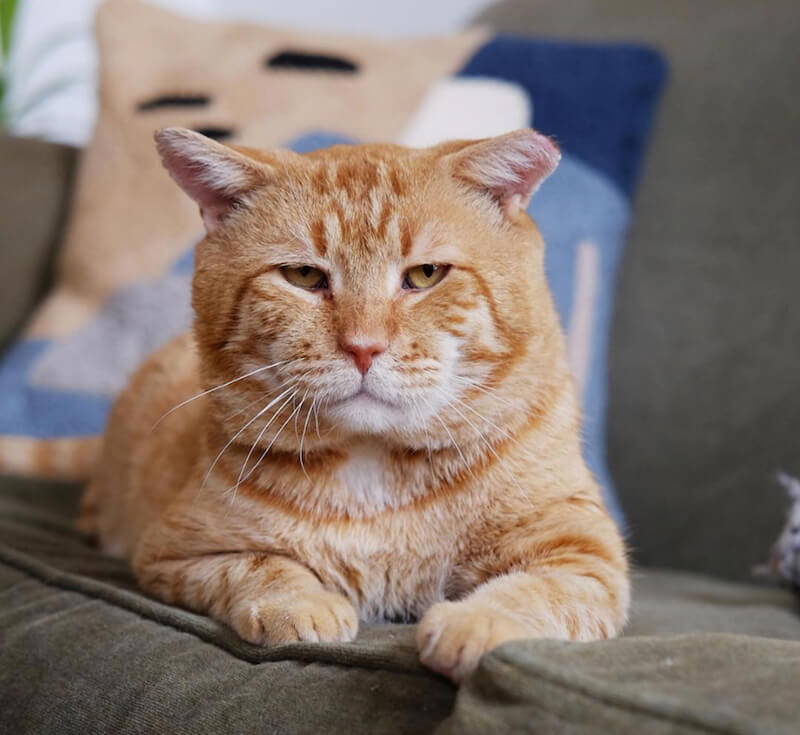
Not to pry, but that set-up must be a little…interesting when it comes to your social life in New York.
It’s definitely been a barrier to a dating life. In part because some guys are allergic, and some guys are put off by it. But mainly because I just don’t have the time!
Working a full-time job, and being a full-time cat rescuer—on top of making time for friends and for myself—leaves zero room for dating. That’s another reason why New York City needs to pay me to do this…so I can ditch the day job and start dating again.
If someone is interested in becoming a part of the rescue community, who else should they be following online?
@Flatbushcats is great at educating a larger audience about cat rescue. @Bookstorecats is a combination of cute photos of bookstore cats and TNR info. Also, @the_crazy_cat_fam @catcastle.nyc, and @eccentric_essences are all great rescuers who showcase their rescue work on Instagram.

If someone’s on the fence about whether they are ready to adopt a cat, what are some questions they should be asking themselves?
Definitely ask yourself if you see yourself being able to commit to the cat for 18+ years. What happens if you move, what happens if you have a baby? When your life changes, will you be able to care for a cat during all of it? Adopting a cat should be for the entirety of its life, so you need to be prepared for that.
Enjoyed this? Check out more of our great cat content—from things to consider before adopting a cat, to a rundown of pet-centric music videos & super creative animal names. And if you do adopt a furry friend, consider hooking them up with Lemonade pet insurance.
Please note: Lemonade articles and other editorial content are meant for educational purposes only, and should not be relied upon instead of professional legal, insurance or financial advice. The content of these educational articles does not alter the terms, conditions, exclusions, or limitations of policies issued by Lemonade, which differ according to your state of residence. While we regularly review previously published content to ensure it is accurate and up-to-date, there may be instances in which legal conditions or policy details have changed since publication. Any hypothetical examples used in Lemonade editorial content are purely expositional. Hypothetical examples do not alter or bind Lemonade to any application of your insurance policy to the particular facts and circumstances of any actual claim.